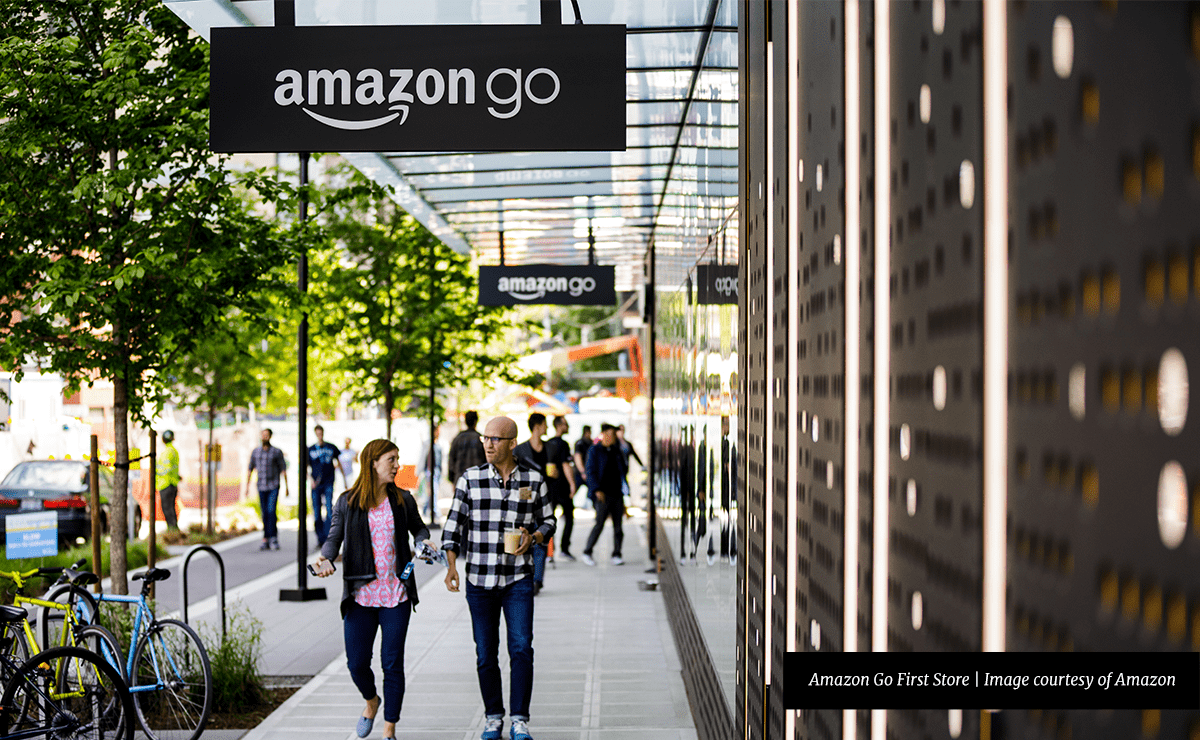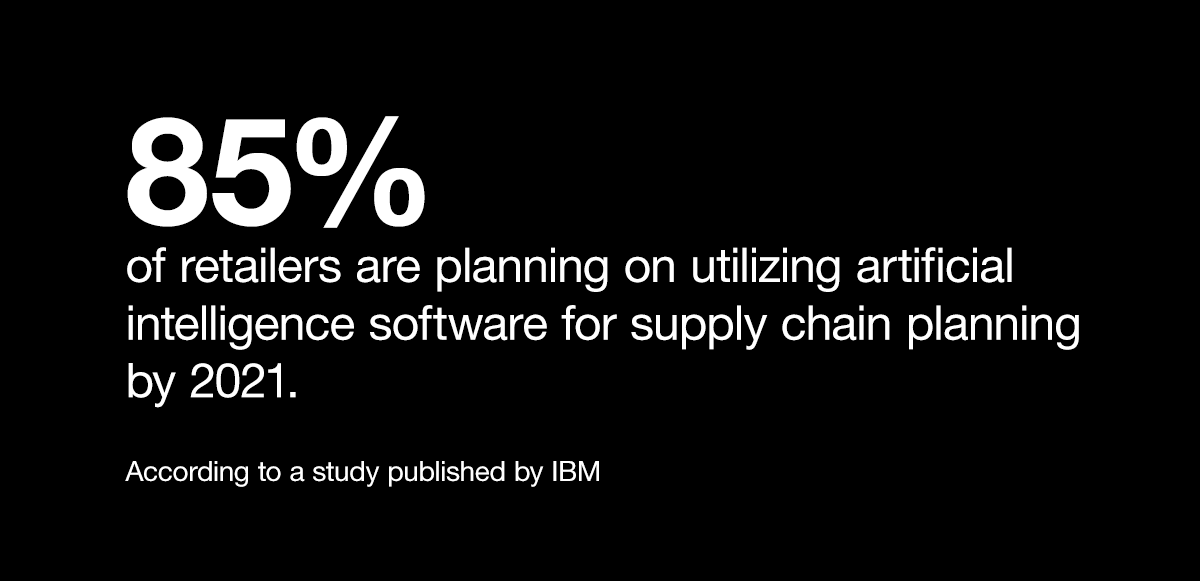Corporate Examples of Machine Learning Integration
Amazon has been on the cutting edge of AI technology integration and through its new physical retail space we can see how future corporations plan to assimilate this practice into their consumer operations.
On Jan. 22, Amazon opened its “Amazon Go” store in Seattle powered through self-checkout machines and AI technology. Customers simply scan a code on the Amazon Go app, items are tracked through the store, tallied and charged to a person’s Amazon account as they leave: no cashiers or checkout necessary.
Artificial intelligence factors into this retail experience as the algorithms embedded in the camera technology can identify buyers and the items they are picking up.
Dr. Bernd Schoner, CEO and co-founder of DeepMagic, an AI and IoT technology company, told RETHINK Retail that unattended, automated POS will change retail in the same dramatic fashion that driver-less cars will change transportation.
 “Visual SKU recognition is the next big technology in Auto-ID, following optical scanning and RFID,” Dr. Schoner revealed.
“Visual SKU recognition is the next big technology in Auto-ID, following optical scanning and RFID,” Dr. Schoner revealed.
“Frictionless shopping requires the seamless integration of SKU identification, payment processing and security. There is no doubt in my mind that computer vision and AI for SKU identification will play a major role in retail tech, as already evidenced by Amazon Go.”
Other retail conglomerates such as Walmart have a similar plan to bring AI to brick and mortar stores with its IRL, Intelligent Retail Lab, design. While close in concept, the application between the two retail giants is very different. Walmart’s smart camera technology is used to watch inventory and ensure freshness of perishables as well as guarantee appropriately stocked shelves, so customers do not have to worry about items being unavailable.
These two examples exemplify the nuanced possibility of machine learning and AI-driven technologies to completely reimagine the retail experience on every level: from consumers to executives, workers and third-party benefactors.
Benefits of AI in Retail
In January, IBM published a study in association with the National Retail Foundation detailing supply chain management and retail solutions born through the adoption of AI technologies and algorithms. Hoping to improve efficacy of retail practices and reduce costs, brands see dynamic AI automation as the means to an end: expanding operational agility and improving the customer experience.
 Researchers found 85 percent of retailers were planning on utilizing artificial intelligence software for supply chain planning by 2021. Likewise, 79 percent had plans to integrate this advanced technology into their customer intelligence programs. Upward of 71 percent of executives already utilizing AI technology experience expanded business capabilities with an additional 66 percent saying it increases the consumer experience while mitigating some of the more negative effects of the modern shopping experience.
Researchers found 85 percent of retailers were planning on utilizing artificial intelligence software for supply chain planning by 2021. Likewise, 79 percent had plans to integrate this advanced technology into their customer intelligence programs. Upward of 71 percent of executives already utilizing AI technology experience expanded business capabilities with an additional 66 percent saying it increases the consumer experience while mitigating some of the more negative effects of the modern shopping experience.
Adoption of AI-driven services can also help revitalize a brick and mortar store by enhancing the customer experience; for example, with chatbots and tailored online experiences. In addition, AI technology has been heralded by current adopters as a potential reprieve for physical retail spaces amidst the retail apocalypse, which has resulted in thousands of store closures. AI has the potential to enable robots or kiosks in physical retail spaces to help customers more readily locate in-store products or potentially work as virtual shopping assistants.
Additionally, machine learning has carved out a unique space in market analysis and advertising content. Artificial intelligence research agency Emerj conducted a case study with an AI marketing platform, Albert, in conjunction with an Italian lingerie brand. The results were staggering.
The lingerie company found that manual marketing and advertising were not cost-effective. However, with the integration of Albert in a single month overall ad spend was reduced by 12 percent, yet ROAS increased by 50 percent across digital media platforms with Facebook seeing a 565 percent increase.
After three months of incorporation, ROAS expanded 336 percent with a 2,000 percent increase in purchases generated through social media platforms. Integrating AI technology into digital marketing revitalized the entire brand. Researchers extrapolate these findings to suggest businesses can use AI tech to scale productivity upwards without conversely scaling staff expenses.
Pitfalls of Machine Learning and AI in Retail
With all the possibilities inherent in technological advancements such as intelligent-based automation and AI tracking software, there are pitfalls. While from a business standpoint the reduction in costs would mean more money for the company, it often comes at the cost of employee hours and in many cases their entire livelihoods.
As automation looms over industry, projections by the Investor Responsibility Research Center concluded that upwards of 6 million retail jobs could be lost within the next decade to computerization through AI technology and other automation services, i.e., nearly half of all retail-related jobs. The report categorizes the displaced laborers as “stranded workers”.
Aside from the ethical implications regarding workers, there are additional complications for consumers. Machine learning is foundational to artificial intelligence; however, this new wave tech can be prone to bias and stereotyping.
 The way artificial technology uses machine learning often revolves around crawling through the internet to teach itself words, context, images and application. It builds this AI technology through understanding how images and words are often used in conjunction with others. A paper published in Science, a magazine by the American Association for the Advancement of Science, found that these programs displayed bias against black people and women. They’re often prone to gender and racial stereotyping.
The way artificial technology uses machine learning often revolves around crawling through the internet to teach itself words, context, images and application. It builds this AI technology through understanding how images and words are often used in conjunction with others. A paper published in Science, a magazine by the American Association for the Advancement of Science, found that these programs displayed bias against black people and women. They’re often prone to gender and racial stereotyping.
The prevalence of stereotyping in the traditional consumer space is well-known and documented. With as much as 80 percent of black consumers reportedly experiencing racism and stereotyping in retail spaces. As AI technology is influenced by their programmers and the history of the space it is utilized in, the retail market may become a hotbed for machine-based racial stereotyping in unique ways.
Naturally, this is not to advise against brands looking to utilize AI technology, but rather to serve as a cautionary tale of the drawbacks associated with computer-based consumer interaction and the historical and contemporaneous reality that influences the way this technology learns from, and consequently interacts with, the world.
Conclusion
As the technology matures, it opens the industry to new, innovative ways to improve quality, speed and overall efficiency even if this new tech comes with ethical and operational risks. To appropriately take advantage of this developing technology, brands must be honest about more than just the potential profit margins.
With the rise of “Ethical AI” to mitigate some of the more prominent concerns, hopefully the 85 percent of corporations interested in integrating this technology into their business practices will be cognizant about its weak spots as much as they are positive about its benefits.












